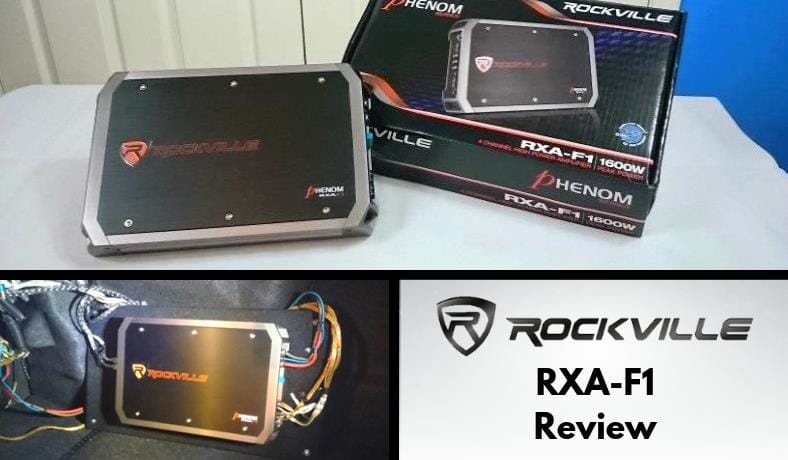I’m a big fan of 4 channel amps for a lot of reasons. Seeing another budget amp maker like Rockville on the market really got me curious.
I couldn’t wait to get my hands on one, install it, and put it through the paces in everyday use. Fortunately, I can say I found some nice surprises I didn’t expect.
In my hands-on review of the Rockville RXA-F1 4 channel amp I’ll tell you what I found, how it sounds, and if it’s worth the money. I’ve even opened one up to show you what’s inside.
Contents
- Basics first: Getting to know the Rockville RXA-F1
- Unboxing and first impressions
- What’s in the box?
- Build quality and checking fit & finish
- Front and rear panel details
- Speaker level inputs – Another cool feature!
- The Rockville’s amp guts revealed! What’s inside?
- Specifications
- My test setup and installation
- How does it sound? Real music and test tracks
- Owner’s manual quality
- Special features that set it apart
- Review score & summary
Basics first: Getting to know the Rockville RXA-F1
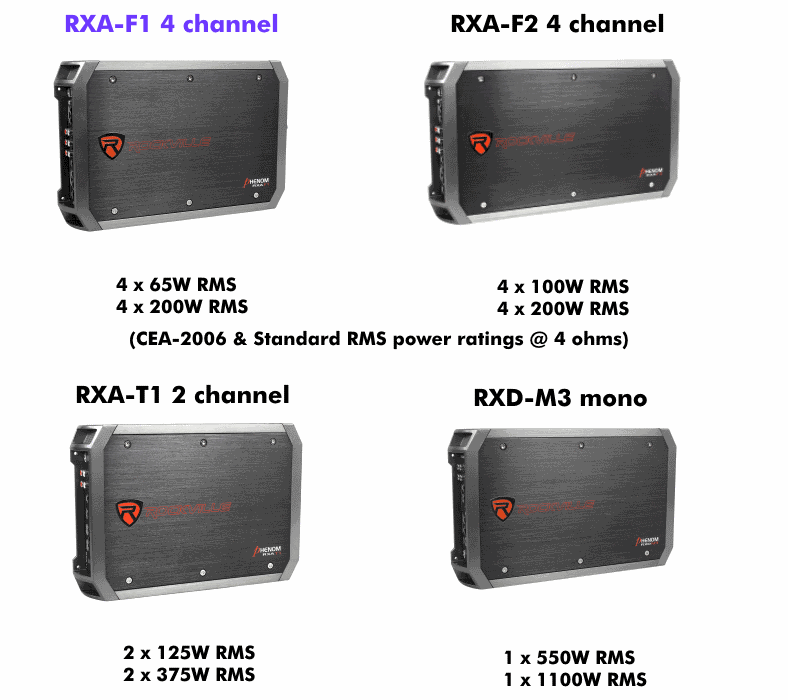
Several of the best-selling Rockville amplifiers from the Phenom model line shown with both true RMS power ratings (2 different measurements are used). Phenom series amps are highly affordable class A/B amps with a conventional design.
The RXA-F1 amplifier is one of a number of members in Rockville’s Phenom family of amps. It’s a best-selling line of amplifiers based on traditional class A/B technology design. What helps set the Rockville line of amps apart from other budget brands are the Consumer Electronics Association (CEA) 2006 industry standard power ratings.
That’s a great thing as way too many budget-priced amps still use misleading specs such as “peak” or “maximum” power. CEA-2006 ratings mean an amp is certified to deliver the rated power advertised.
They also list (as do some other manufacturers) another RMS power rating that’s measured differently. Not to worry though as I’ll explain more about that later.
In the Phenom family you’ll find several types of amplifiers:
- 4 channel models
- 2 channel models
- 5 channel models
- Mono (single) channel bass amps
The company also offers a budget-priced line called the DB series too. However, the Phenom series provides slightly better sound quality specs and features the DB series doesn’t (although the DB series are still a good choice as well).
The Phenom series models are only a few dollars more than DB models so they’re really hard to pass up. The main difference, however, lies in the features as the Phenom series offers more.
Most models are good sellers in today’s market and sell for around $90-$125 or so depending on the model & power level. They’re also good-looking, too!
More about the RXA-F1
Price-wise, the RXA-F1 is definitely in the affordable range: I've found them for well under $100 at Amazon. Not bad!
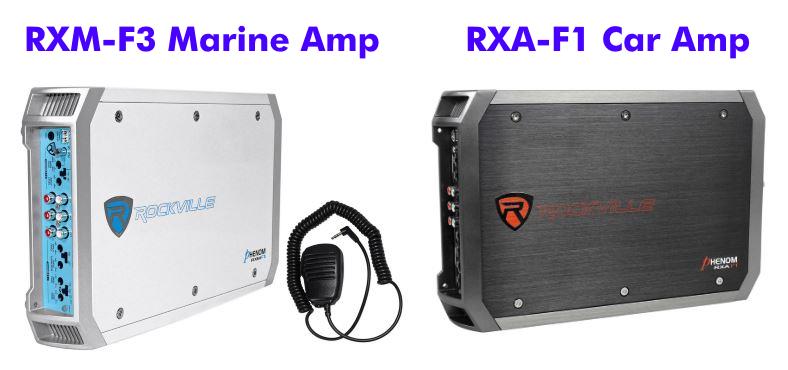
The RXA-F1 car amp is also available in its twin version the RXM-F3 marine amp. Both have the same general design & power ratings, too. However, the RXM-F3 adds a protective coating to the circuit board and a microphone loudspeaker feature.
Its twin, the marine version RXM-F3 is almost identical aside from the different cosmetic package, conformal coating to protect the circuit board, and a microphone loudspeaker feature.
The RXA-F1 is also bridgeable. CEA-2006 power ratings are up to 95W RMS x 4 at 2 ohms, 65W x 4 @ 4 ohms, or 200W x 2 RMS (CEA-2006) power. However, the amp can deliver a fair amount more power than the CEA-2006 ratings.
I’ll explain more about that as we go.
Unboxing and first impressions
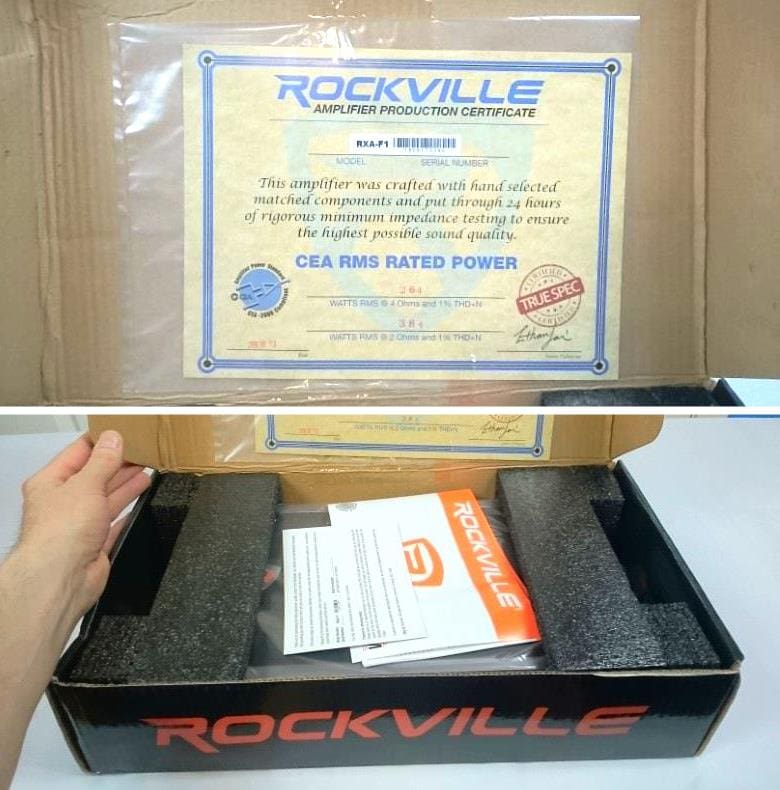
I finally got my hands on it! My Rockville amp finally arrived and I got started unboxing right away. Inside the box was the amp’s production certificate, accessories, and manual. It’s well-packaged too, with snug foam inserts holding it in place. I really prefer the foam over styrofoam any day.
Upon opening the box I got a good impression. We’re off to a good start, so far!
Immediately after opening it up you’ll find the amp’s production certificate stamped with both the CEA-2006 power ratings and the serial number inside. It’s a nice touch.
Granted, it’s not as detailed as the production certificates provided with some much more expensive amps (like those by Rockford Fosgate, MTX, and so on) but that’s ok.
The certificate gives the impression that each amp has power measured individually during production but that’s not the case. Regardless, it’s not really an issue.
What we really care about is having the amp meet its rated power output as advertised. I’ll cover that a bit more in detail later.
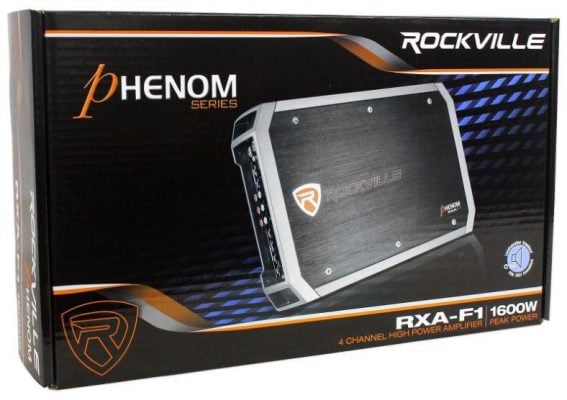
The RXA-F1 comes neatly packed in a good-looking box with secure packaging to keep it safe inside. However, despite being marketed with true power ratings (CEA-2006 & standard RMS specs) they still list the power on the box as “peak power.” Why? I don’t get it.
All in all, my RXA-F1 was well-packaged and everything looked good. Despite being a budget amp line I’m happy with what I found after opening it up. What I don’t care for is the use of the peak power ratings on the box like less reputable amps use.
I just don’t get that in this day and age. That’s more of a nuisance though and not a “real” issue.
What’s in the box?
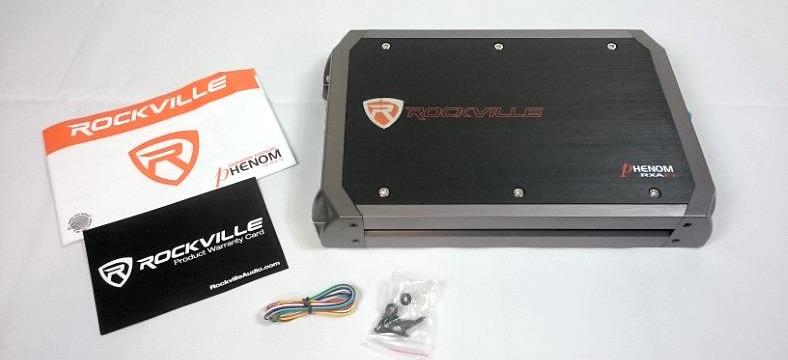
As unboxing is straightforward let’s get right to the good stuff: What comes in the box?
You’ll find the following inside:
- A nice owner’s manual
- Warranty card (1 year warranty)
- Speaker level input harness adapter
- Four #8 1″ pan head mounting screws with rubber washers
- The amplifier
The included screws are #8 pan head screws and should work well for nearly all installations. I used them myself during testing. They’re definitely the right length (no complaints here).
Installer tip: I recommend you drill pilot holes before driving the screws into the mounting surface when mounting it.
That’s because driving screws into some materials without pilot holes (using a 1/8″ bit) can cause them to split & crack badly. For soft woods like pine if making your own DIY car amp rack however that’s usually not a problem. For other materials like medium density fiberboard (MDF), particle board, or fiberglass it can be a big problem!
The included rubber washers are used between the screws and the amp’s mounting feet on the outside ends. That helps prevent marring of the plastic mounting feet and allows having a lot really secure mount too.
So far, so good. One thing I did notice, however, is that the hex wrenches you’ll need to tighten and loosen the wiring terminals aren’t included. The sizes you’ll need are 4mm (5/32″) and 2mm (5/64″).
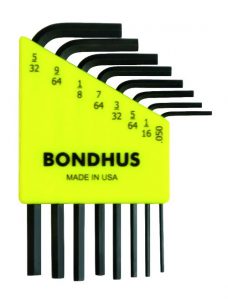 As the amp doesn’t include the 2 hex wrenches you’ll need to use on the wiring terminals, you’ll need to pick up a decent cheap set like these I found at Amazon.
As the amp doesn’t include the 2 hex wrenches you’ll need to use on the wiring terminals, you’ll need to pick up a decent cheap set like these I found at Amazon.
The great news is that you can use up to 4 gauge wire in the power terminals.
Build quality and checking fit & finish
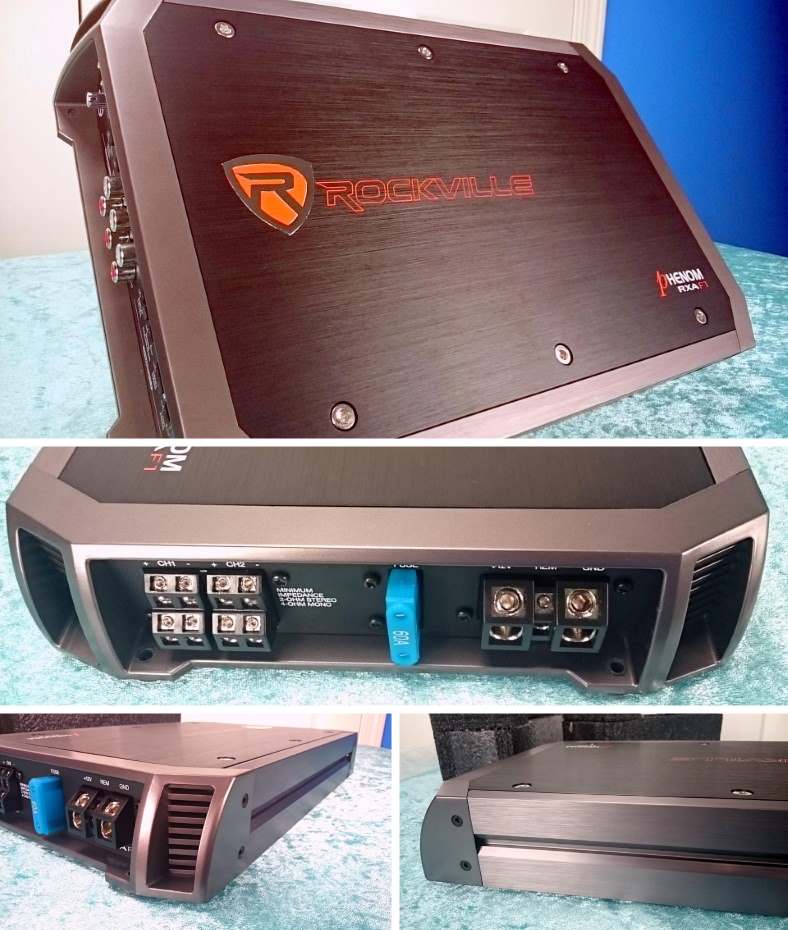
Close-ups of the RXA-F1 from different angles to show the build quality & fit and finish you can expect. Overall, it’s a well-built amp that looks better than I expected for such an affordable amp. It’s also very attractive despite using a fair amount of plastic on both ends. There’s a nice black brushed metal center inlay that I really like.
As I always do, I gave it a good “once over” to check the build quality, assembly, and find any noticeable flaws. Overall, it’s a good-looking amp and well made.
There’s a lovely black brushed metal centerpiece on the top of the amp with the Rockville logo and emblem. It’s a nice-looking touch and has a bit of class to it.
General design and finish quality
As car amplifiers go, it’s the same tried-and-true design: An aluminum heatsink chassis. However, the Phenom series of amps have a slightly unique design in that the sides are a dark gray instead of black like the top. There are also some false hex-head chrome screws in the centerpiece which add another nice touch.
Front and rear end sections are made of plastic and serve as the mounting feet, which is my only real gripe (metal mounting feet are much more durable and can take more force without warping or cracking.)
Overall, fit and finish are very good. It’s a good-looking amp and you might guess it’s more expensive than it really is if you didn’t know better. I like it!
The downside of being a budget amp is that to keep costs low older technology is used. This means unlike some of today’s more compact amps the trade off is the amp is bigger. Just something to be aware of before buying.
A note about budget amp quality
As I’ve own and have tested several Rockville amps, I have noticed a few minor quality control issues. In 1 or 2 amps I’ve had a dial or two (gain or other adjustment dials) were a bit misaligned with the end panel opening. However, that’s a fact of life sometimes for budget products.
Overall I’ve been pretty happy with the quality and with the RXA-F1 is no exception.
Front and rear panel details
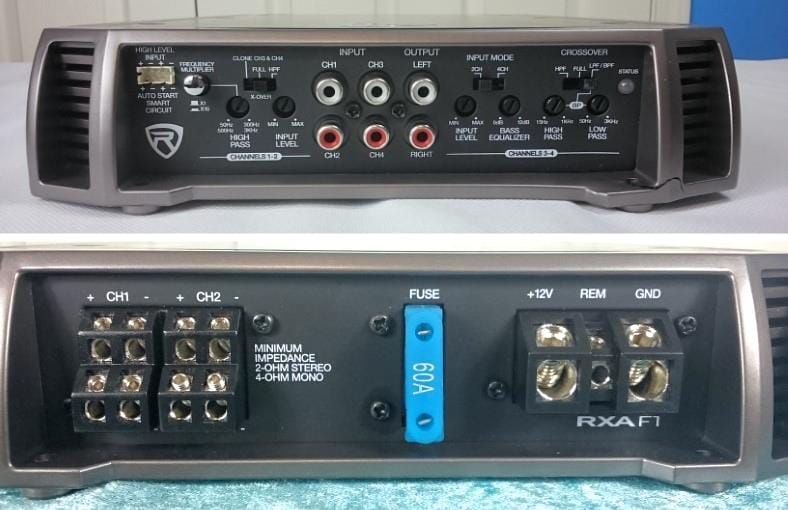
Shown: Front and rear panels with controls and wiring connections for the amp. For a budget amp, it’s actually very good. Wiring terminals need hex wrenches to use them, but give a clean, solid, and reliable connection you’ll like. RCA input jacks and the crossover controls are easy to understand and well laid out.
Wiring terminal quality & installation notes
To be a budget-priced amp, you’d think you’d get the same inexpensive wiring terminals that so many other amp manufacturers use. That’s not the case here, and I’m really happy to see that!
Wiring terminals use a solid machined metal design where instead of using a simple vertical screw and square contact like others, you’ll get a solid 360-degree opening. Hex head screws tighten within each wiring terminal for a very secure and clean connection point.
In testing I found them to be reliable, great for avoiding stray wiring, and good-looking too. While the openings do face out at a very slight downward angle (only a few degrees), in practice they’re still easy to use.
A standard sized 60 amp automotive fuse is replaceable and conveniently mounted between the terminal strips. Labels are clear and easy to understand, although the bridging labels aren’t provided for some reason.
Probably due to the limited amount of space. Bridging is easy – just check the owner’s manual to be sure you’re using the correct terminals (Left channel positive & right channel negative).
The control panel & audio jacks
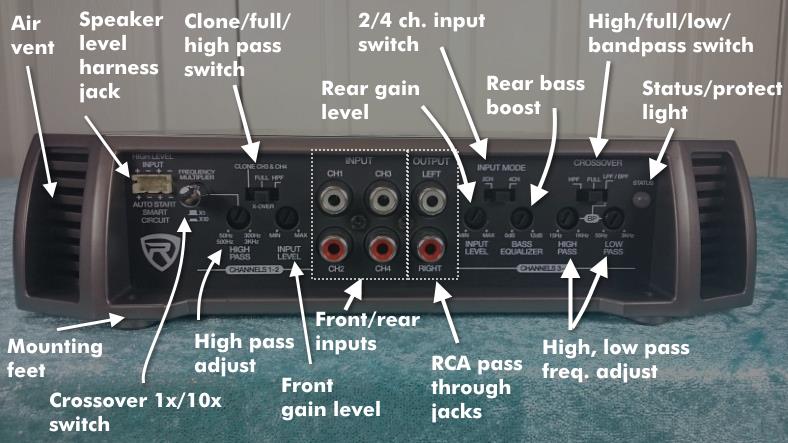
The Rockville amp’s control & input panel is jam-packed with good stuff! Above is a labeled diagram to help you understand it better.
Honestly, in the case of this amp, it’s a bit surprising how much is packed into the control & input panel end. There’s quite a bit to explain here so I’ll start by covering the basics. I’ll leave the more advanced features to a separate section later in my review.
The control & audio input end of the amp provides the following inputs, outputs, and control features:
- Speaker level input harness (provided) and RCA front & rear input jacks
- RCA pass-through jacks for connecting to more amps
- Front crossover switch: Ch. 3/4 Clone, full-pass, and high-pass options
- Front crossover adjustments: High pass frequency
- Rear crossover switch: High-pass, full pass, and low or bandpass options
- Rear crossover adjustment: High, low, and bandpass high/low options
- Status & protection indicator light
- Front & rear gain level adjustment
- Rear channel bass boost adjustment
- Crossover frequency multiplier switch: 1x/10x positions
- 2/4 channel input mode switch
Each end of the amplifier also has 2 plastic areas resembling a grill that act as vents for cooling. At the bottom and next to each vent area is a plastic mounting foot as well.
Crossover controls
While it might seem confusing at first, in all reality the controls are pretty straight forward. Fortunately the owner’s manual is really helpful at explaining everything.
You have the following flexible crossover modes:
- Front channels: Use in full range, or high or low-pass mode (via the clone switch option)
- Rear channels: Bandpass, high-pass, low-pass (with bass boost option), or full range
The 12dB/octave high-pass adjustable frequency range is 50-300Hz (1x mode) or 500Hz-3KHz (10x mode). The low pass range is very generous: You’ll get a range from 50Hz to 3KHz with 12dB/octave cutoff also.
A bass boost is available and offers up to +12dB of adjustable boost. However, it’s only available on the rear channels. Likewise, the bandpass filter mode is only offered on channels 3 & 4 as well.
You’re not restricted to only the specified adjustable cutoff frequencies, either: Push the crossover multiplier to get a range that’s 10x the listed numbers (I’ll cover that in more detail later).
Speaker level inputs – Another cool feature!
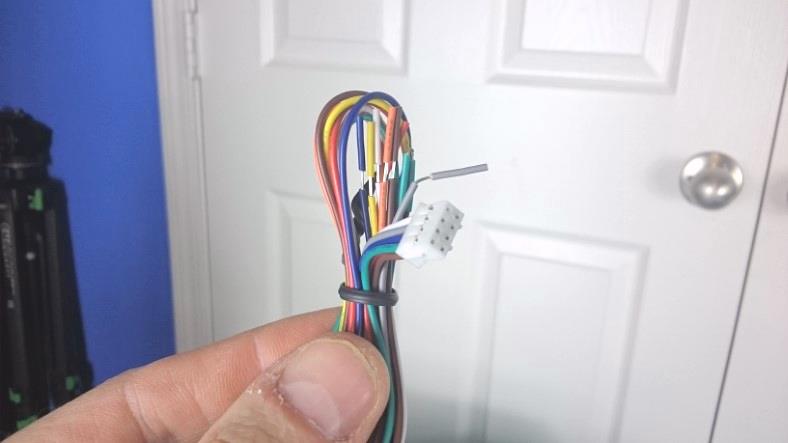
Rockville Phenom amps provide speaker level inputs in case you don’t have RCA jacks handy on your head unit. Factory radio? No problem! In fact, to my surprise, there’s an auto-on remote feature built in when using this.
I’ve got to hand it to Rockville: I didn’t expect an auto-on feature to be available. While it’s a feature I’ve seen in more expensive amps it’s a surprise to find in an amp under $100.
When using speaker level inputs, you won’t need to connect a remote on wire! There’s a cool feature built in where the amp will automatically switch on or off when it senses a high-level signal from your stereo.
While that’s excellent and can save you a lot of work, there’s a minor gripe I have: Front and rear speaker level inputs aren’t labeled in the owner’s manual for some reason.
The +/- speaker input wiring is labeled on the amp, so you’re good there. However, the owner’s manual doesn’t tell you the front/rear wiring colors, so you’ll have to sort through that at installation time.
The Rockville’s amp guts revealed! What’s inside?
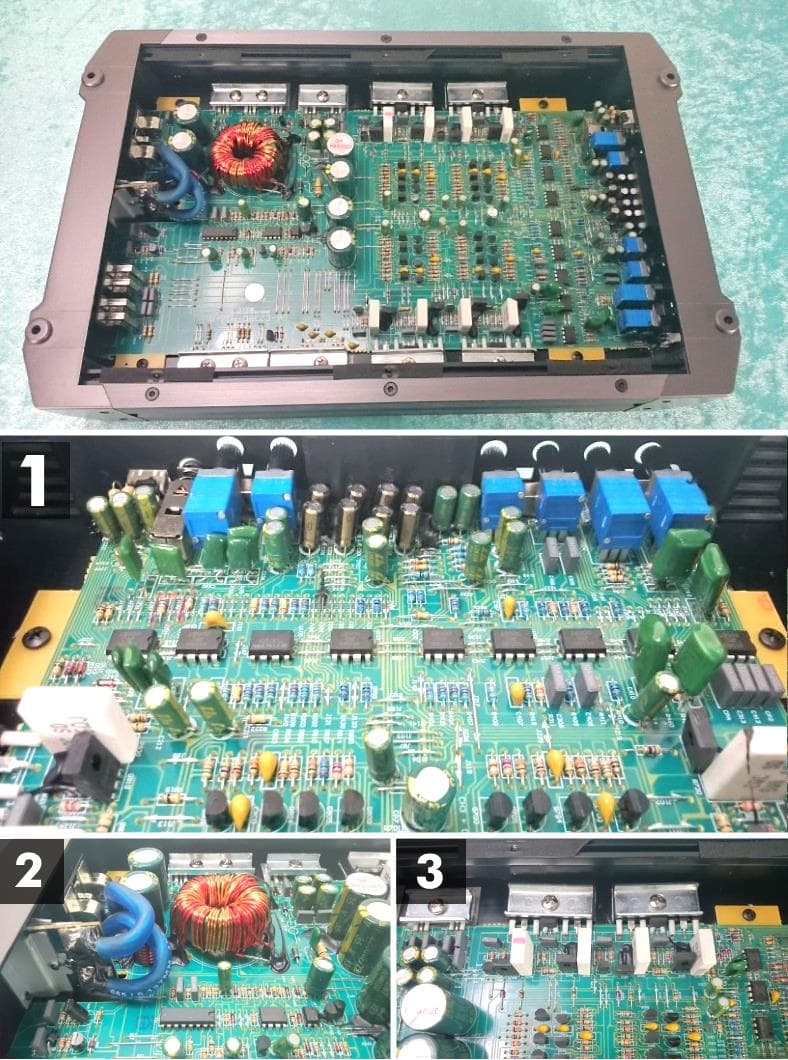
Close up view of the RXA-F1’s internal components. 1) The front-end stage of the circuit board (inputs, crossovers, and controls), 2) the switching power supply, and 3) one of the output stages of an amp channel.
To help you get a better feeling for what you’ll be getting if you buy one, I opened my amp to show you all the gritty details.
While the Phenom series of car amps are able to offer good power and features that has to come with compromises, just like any other value-priced electronics. To keep costs low, Rockville uses a modern version of the proven class A/B amp design.
While you won’t get the ultra-compact size and efficiency of modern class D amps (which you’ll pay for more, by the way, in many cases) that’s a fairly small trade off you’ll have to live with when saving money.
Overall, after giving it a close look-over I can say it’s well done. While it’s a single-sided board (conductive traces are on the bottom of the PCB) there’s heavy use of solder on the traces for extra conductivity and current flow with less resistance.
It’s a well-designed board for this price range.
Design specs & notes
Internally, the amp uses a single-sided printed circuit board (PCB) and through-hole components with a bit of hand assembly. While higher end brands are super small these days and use specialized semiconductors and chips, Rockville’s design uses off-the-shelf components for the most part.
The fact that their design doesn’t use the latest, fanciest, or tiniest parts isn’t a problem at all. That’s because while the design has to be that way to cut costs, in fact, the result is still a well-done and great sounding amp.
Even today many audiophiles use through-hole components for high-end audio boards so it’s not an issue.
Standard bipolar output transistors are used. Undervoltage & high-temperature protection is built in as well.
The adjustable control potentiometers (used for gain, crossovers, and bass boost levels) are of good quality, too.
Note: The company also advertises that the Phenom amps use audiophile-quality capacitors and feature a “class G” design.
Basically this means while it’s a traditional class A/B amp, the power supply reduces output depending upon power needs to reduce waste and help improve overall efficiency.
Specifications
- CEA Compliant Power Ratings:
- 260 Watts (4 x 65 Watts) at 4 ohms and 1% THD+N
- 380 Watts (4 x 95 Watts) at 2 ohms < 1% THD
- 2 x 200 Watts bridged @ 4 Ohms < 1% THD
- RMS Power Ratings:
- 800 Watts (4 x 200 Watts RMS) @ 2 ohms
- 800 Watts (2 x 400 Watts RMS) @ 4 ohm Bridged
- 500 Watts (4 x 125 Watts RMS) @ 4 ohms
- Peak Power: 1600 Watts (2 x 800 @ 2 ohms or 1 x 1600 @ 4 Ohms)
- High-Speed MOSFET Power Supply with self-regulating efficiency output
- Studio-Grade Bipolar Output Stage Transistors
- Fully Adjustable 0-12dB bass equalizer
- 2-Ohm Stable Stereo
- 4-Ohm Mono Bridgeable
- 3 Channel Mixed-Mono Capable (Tri-mode)
- Mute and Delay Soft Start System
- Full IC-Controlled Protection Circuitry
- 2 CH/4 CH Input Mode Switch
- RCA Preamp Line Output
- Speaker-level input
- Auto-on remote sensing for speaker inputs
- ELNA Brand Audiophile Capacitors
- Status Mode LED Indicator
- Signal to noise ratio (SNR): > 100dB
- Minimum THD: < 0.05%
- Frequency Response: 10Hz – 40KHz
- Fully Adjustable 12dB / Octave Crossover with Differential Circuitry
- CH3 & CH4 Low Pass 50Hz – 3KHz
- CH3 & CH4 High Pass 15Hz – 1KHz
- CH1 & CH2 High Pass 50Hz – 300Hz (x1), 500Hz – 3Khz (x10)
- Sensitivity: 100dB @ 1w / 1m
- Damping Factor: > 200 @ 100Hz
- 60 Amp Maxi Fuse
- Dimensions: (W x H x L) 8.5″ x 1.8″ x 13″
As you can see, there’s no shortage of good specifications for the amp. However, real-world testing is what really counts for what matters in my experience.
Understanding the RXA-F1’s power ratings
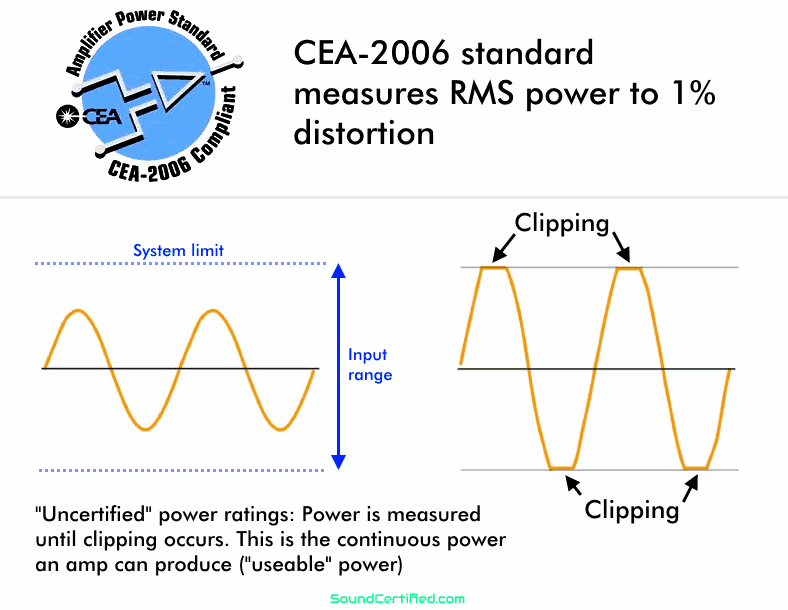
It can definitely seem confusing when you first look at the amp’s power ratings. However, there’s a logical reason they provide 2 RMS power ratings. Continuous root mean square (RMS) power ratings existed long before the industry standard CEA-2006 method of rating an audio amplifier’s power came along.
They differ in a few ways, but both are useful when comparing similarly rated electronics:
- CEA-2006 power ratings are measured when an amp’s power output reaches 1% distortion. This is a lower number than what an amp is capable of producing (with higher distortion) in nearly all cases.
- The continuous RMS power (sometimes called “uncertified” power) is a measurement of the power an amp can put out continuously until the signal begins to clip.
Clipping is the point at which an amp can’t amplify the input signal anymore. It’s also a terrible form of distortion and can potentially damage speakers. That’s why we try to avoid it always.
The “uncertified” rating is how much “useable”, or how much power you can continuously expect to get, out of an amplifier for the rated speaker load.
The important thing to remember is this: When comparing car amps, compare similar power ratings. Otherwise, it’s not a fair comparison and can be very misleading!
Fortunately, the Rockville amps are industry certified to deliver at least the CEA-2006 power ratings advertised. In fact they’ll exceed those up to the uncertified (continuous) RMS ratings.
A quick note about the signal-to-noise ratio (SNR)
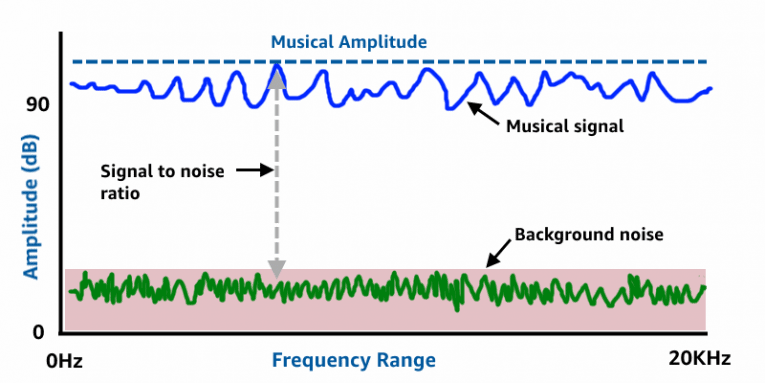
The signal-to-noise ratio (SNR) is measured in decibels (dB) and is a way of comparing the amount of “hiss” or base noise level an amp produces compared to the musical signal. A higher number is better, and typical car amplifiers are around 90dB and above.
Rockville lists the Phenom series (at least several of the prime models) as having an SNR ratio of greater than 100dB, which is very good. You’ll have to pay a lot more money to get even higher numbers, and it’s really not worth it unless you’re a true audiophile or want competition-level performance.
Note that they don’t specify how that’s measured. In some case the SNR is measured at 1 watt, and/or at a higher power output where amps perform better. Those more specific rating specs are a bit rare among car amps, though.
However, in my test experience, the Rockville did well for the average user. With a good clean signal you’ll be enjoying no noticeable “hiss” at all.
My test setup and installation
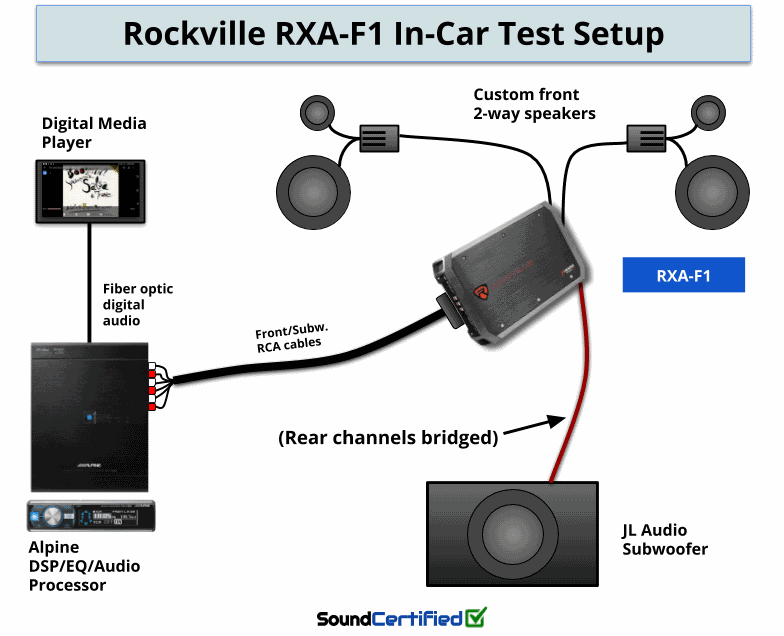
Shown: My test setup used to find out how the Rockville amp performed in the real world daily.
Alright, on to the good stuff! Once I got the amp I was able to install it, tune my system, and give it a real-world test.
Installing the RXA-F1
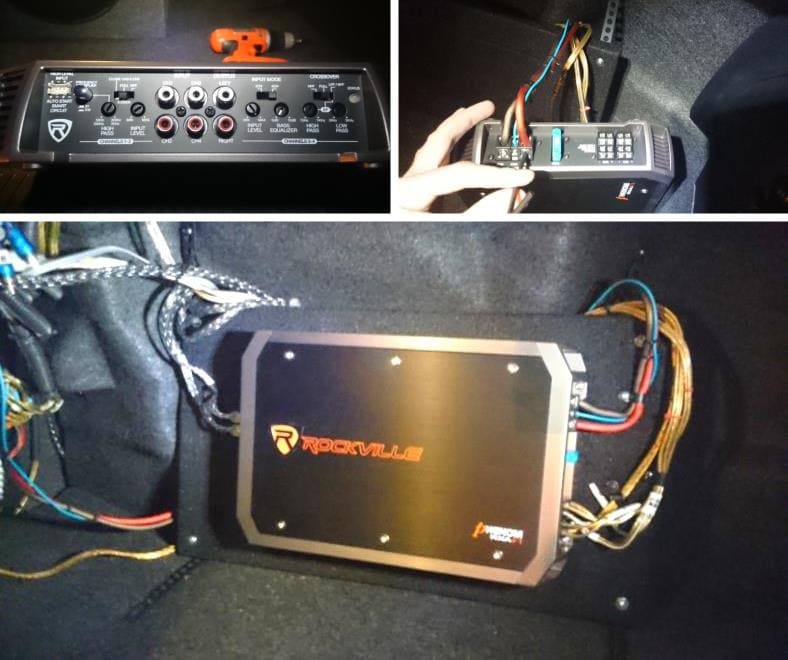
Installing the RXA-F1 for daily testing and putting it through its paces. Yeah, I installed it at night! That’s how badly I wanted to try it out and start enjoying it, ha ha!
I used my test setup (piggy-backing off of my original everyday system) to power and supply a super-clean audio signal to the Rockville amp.
Overall, installation is pretty easy, although I did have to find my own hex wrenches for loosening & tightening the wiring terminals screws as I mentioned earlier. I also had to check the owner’s manual for bridged wiring instructions as bridged connections aren’t printed on the amp itself.
I did find that the speaker wiring terminals can be a bit tricky, as they’re a bit deep inside: You’ve got to be sure you’ve got the speaker wire inserted fully. Otherwise, after tightening the screws it’s possible to pull the wire out and you’ll have to start again.
No problems with the power & remote wire terminals, however. They’re easy to work with and everything went great. I fired it up and gave it a day of burn-in time before I evaluated the performance.
Note: If you’re using a head unit with only 2 channels instead 4 (front/rear), you’ll be fine. The 2/4 channel switch allows you to drive all 4 amp channels from only 2 input channels without needing to buy a pair of RCA Y adapters. Just set it to the “2” position.
This works for both RCA inputs and the speaker level inputs as well.
How does it sound? Real music and test tracks
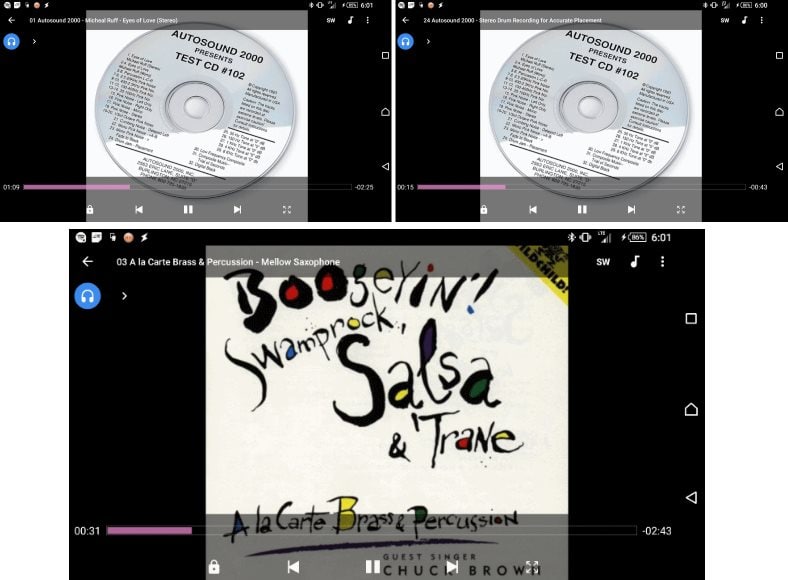
Some reference car audio test tracks I used for testing the amp and verifying sound quality. Top: Autosound 2000 Test CD #102. Bottom: A high-fidelity album from Mapleshade Music featuring unprocessed, excellent sound quality used in some high-end car audio demos.
Using my reference test CDs (as well as music I enjoy and I’m familiar with very well) I ran the amp through a series of tests to check some important characteristics:
- Sound quality & clarity
- Stereo imaging
- Bass sound quality
- Power output with real music
I do this because it’s important to be consistent when testing different audio components including amps. For example, if I were to change the way I tested the amp (change it from the previous installation) I could easily add 1 change that unfairly gives the wrong impression.
To be consistent, I use very high-quality audio tracks and I’m familiar with high-fidelity test tracks as a known good frame of reference.
After quite a bit of listening time I formed my overall opinion: The RXA-F1 is a great-sounding budget amp with very good musical fidelity. Stereo imaging is spot-on and there’s no noticeable compromise in the sound vs. the next higher-priced competitors.

Listening to your favorite everyday jams on Spotify (or whatever music source you like) is enjoyable and fun with the Rockville. Music is crisp, clear, and can really jam hard when you crank the volume. Bass-heavy songs like Ne-Yo’s Miss Independent come through clearly and with plenty of power. In fact, I had a lot more power on tap when I needed it.
The music quality was great, with crisp, dynamic highs and punchy bass. While it’s a teeny-tiny bit less clear than my old-school reference amps, it’s still very good for the money. When I say it’s “good”, I really mean it sounds very good.
I even caught myself thinking about changing my old reference amps for more & more powerful Rockville amps. The watts per dollar value – and features and flexibility – are unusually good for the money. For a lot less than I paid for my old amps I could get 2 Phenom amps with more power and channels.
My overall impression from listening
I have to say, however, that unless you’re one of the pickiest audiophile listeners, you’ll really enjoy it. It’s a very clear, musical amp that has a ton of power just waiting to perform.
While bridging the rear 2 channels to drive my 10″ test subwoofer worked well, in all reality it could use a bit more power if I wanted serious slammin’ bass. However, it’s not designed to drive a subwoofer with slamming bass – it’s a good compromise between price and power that can run the average system.
With 200W RMS available to my 4 ohm JL Audio sub, I got some very nice bass with a very pretty good amount of power and volume. (Note: If you need even more bass, I’d recommend picking up a good budget mono amp.)
In everyday use it did well and I had lots of power just waiting.
The crossovers worked well and are easy to set. Nothing special to mention there (aside from the bonus features built in, which I’ll talk about below) which is a good thing.
It did what it’s supposed to do: It simply works right and gets the job done as you expect.
Owner’s manual quality

Honestly, the owner’s manual is surprisingly good. I’ve seen quite a few over the years and most are pretty weak when it comes to instructions, set up, and getting the most out of the amp.
This one’s better. While it covers several models in the amp family (which is fine, and typical for most amp manufacturers) the instructions apply equally to the main amps in the product family.
Where there are differences it’s made clear to avoid confusion.
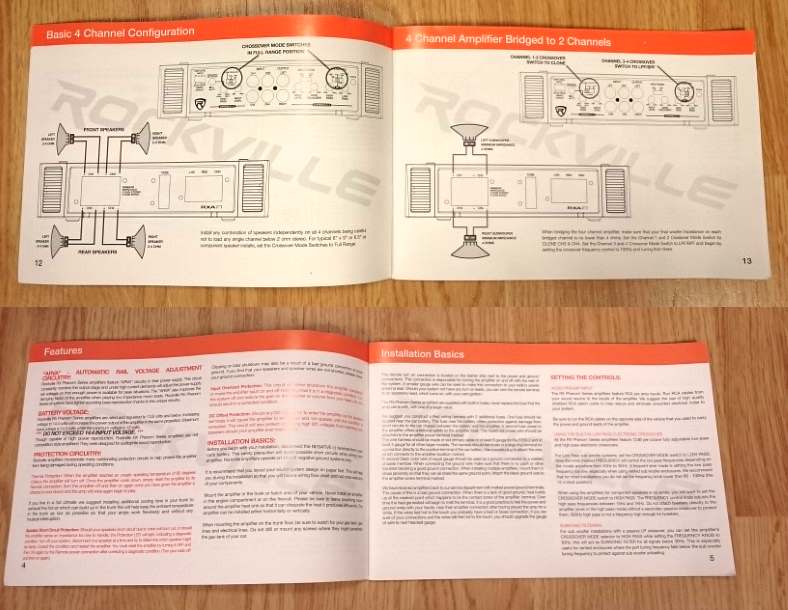
It’s easy to read and you’ll get clear instructions on how to wire up pretty much all speaker systems you could think of. There’s also the tri-mode option, in which 2 channels are used both in stereo and with a 3rd speaker connected in bridged mode at the same time.
In that case they even provide passive crossover component values (capacitors and inductors) to help you too.
As I mentioned earlier, however, when using the speaker level input feature the harness adapter coloring isn’t listed in the manual for some reason, which is odd. I’m not sure why that is, but it’s a pretty small complaint.
Regardless, you’ll be able to connect speaker level inputs using the (+) and (-) symbols which are shown both in the manual and are printed on the amp itself.
Special features that set it apart
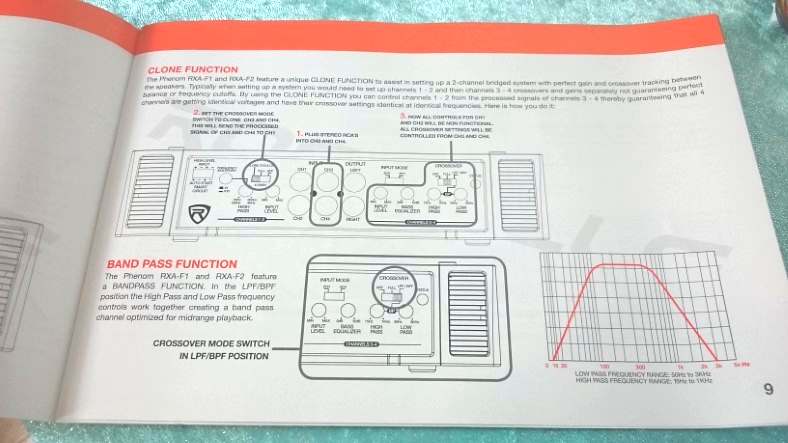
As shown in the owner’s manual, the RXA-F1 has a very cool featured called the “Clone” setting on the front channel pair crossover switch. This duplicates the rear channel settings perfectly for the front channels, taking away any need to try to fiddle with them to match.
Ah yes, here’s where things get interesting – and even better – yet again!
The RXA-F1 has some really neat features I’ve almost never seen in an amp like it, if at all on other amps with few exceptions.
Clone feature: Set the front crossover switch to “clone” and you’ll duplicate perfectly the gain, crossover, and other settings you’ve used on the rear channels. Only the rear RCA inputs (3/4) will be active in this case.
This is great for bridged mode where you’re only using 2 channels for more power or when you’re running a fancier system and need specific crossover settings with only 2 channels.
1x/10x crossover multiplier: I really like this one! In “1x” mode (default setting) the 50Hz-300Hz range is available for a high-pass filter. When set to “10x” the 10 times multiplier is active, allowing a range of 500Hz-3KHz from the same control.
That’s a great addition and adds a lot of extra system flexibility.
Bandpass filter: This one’s really unique as well, and excellent for 3-way or even some bi-amped 2-way systems.
The rear channels offer not only a high pass filter (15Hz-1KHz), a low-pass filter (50Hz-3KHz), but also both can work together to provide a bandpass filter. Both the low and high pass adjustments will work the same in that case but will work in unison.
Note: You won’t be able to use the amp to drive a 4 subwoofers in 4 channel mode as there’s no low-pass crossover for the front speakers.
In practice that’s not a problem, as that’s not something anyone would normally do anyway. You’ll be able to use the amp in bridged mode for one or both pairs when using subs instead.
Review score & summary
Honestly, the RXA-F1 is one of the best values – and best sounding – budget amps I’ve seen in a long time. I’m impressed as it seems like you get a lot more for your money than you should.
Mine was under $100 but it feels like I should have paid even more. It’s got everything that makes a good car amp: Great sound, plenty of power, good looks, and the right features. The unique features and true power ratings really help set it apart from competitors in its price range.
It’s definite “Yes!” in my book. While it can’t match the small size or efficiency of today’s class D amps, it proves that you can get a well-rounded amp that’s powerful and sounds great using proven class A/B technology.
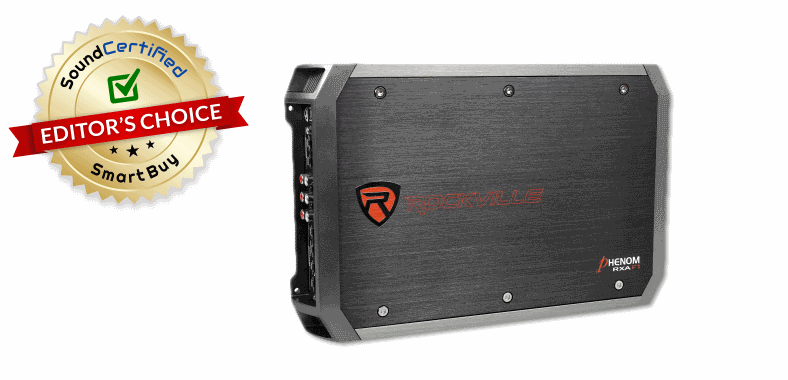
Update: I found out you can get the amp and RWK4 4 gauge wiring kit combo No products found. That’s a really sweet deal while it lasts.
Overall
-
Overall quality - 8.8/10
8.8/10
-
Sound quality - 8.8/10
8.8/10
-
Power & performance - 8.8/10
8.8/10
-
Installation ease - 9/10
9/10
-
Features - 9.5/10
9.5/10
If you're in the market for an affordable 4 channel amp, look no further
Surprisingly good for the price (under $100), the Rockville RXA-F1 is one of the most well-rounded budget amps I’ve had the pleasure to own and test. While there’s the occasional production hiccup, the overall quality is very good – in fact you’ll feel like you should have spent more.
The sound quality rivals that of more expensive class A/B competitors and you’ll get features no one in this price class offers. In real-world testing it really delivers and meets power expectations with clear, fun sound. While there a few tiny quibbles, it’s simply a great value that’s too good to pass up. Industry-standard power ratings are a nice change of pace vs the misleading ratings of competitors. If you need an affordable 4 channel amp this is a winner!
Pros
- Great sound quality for price
- High watts/dollar value
- Very flexible crossovers
- Bridgeable design
- Clone feature makes 2 channel mode easy
- Crossover multiplier switch
- CEA-2006/continuous true power ratings
- Nice finish & build quality
- High quality speaker terminals
- Thermal and short circuit protection
- Good, clear owner’s manual
- Bass boost EQ (adjustable)
- Bandpass crossover option
- Tri-mode capable
- “Class G” power supply for more efficiency
- Available in marine version RXM-F3
Cons
- No speaker terminal wrenches included
- No speaker input harness color diagram
- Plastic mounting feet (vs metal)
- Occasional minor quality control issues
- No low-pass filter on front channels
- Bass boost limited to +12dB max vs +18 of others
- No bridging label near terminals
